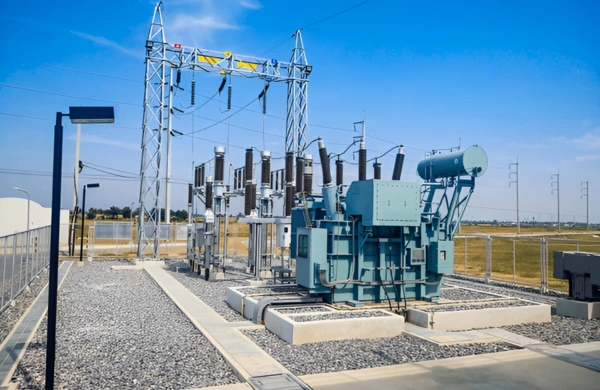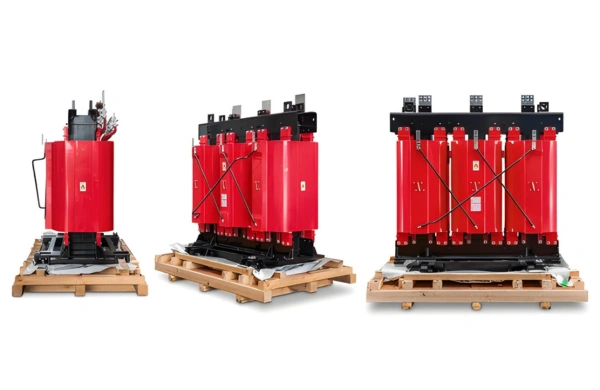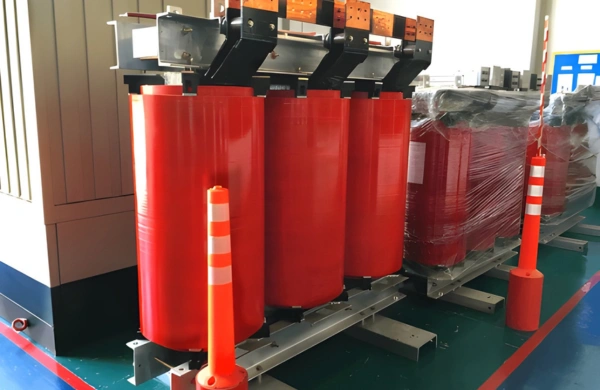Introduction
In the age of inverter welders and digital control systems, welding transformers continue to play a vital role in heavy industry. From shipbuilding and rail fabrication to automotive component manufacturing and structural steelwork, transformer-based welding systems remain the preferred choice for rugged, high-duty operations where power stability, simplicity, and durability are essential.
Know About Why Welding Transformers Remain Vital
for Heavy Industry
Unlike modern inverter welders that rely on electronic switching, welding transformers use robust electromagnetic principles to provide consistent current and high reliability under extreme operating conditions. Their low maintenance requirements, high efficiency, and proven ability to operate in harsh industrial environments make them indispensable to production floors worldwide.
This blog explores the design, working principles, and industrial relevance of welding transformers, while highlighting how Zetwerk delivers precision-engineered transformer solutions tailored for heavy fabrication and industrial applications across North America.
1. Working Principle of a Welding Transformer
A welding transformer is designed to convert high-voltage, low-current input into low-voltage, high-current output suitable for welding arcs. It operates on the same electromagnetic induction principle as other transformers but optimized for short-circuit current control.
Core Operating Concept:
- The primary winding receives input from the main AC supply.
- The secondary winding delivers the lower voltage (typically 20–100 V) required for welding.
- By adjusting the turns ratio or magnetic shunt, the transformer regulates output current according to the welding process.
This ability to control output current is crucial for maintaining a stable arc and achieving consistent weld penetration, especially in heavy-duty industrial applications.
2. Construction and Design of Welding Transformers
The construction of welding transformers focuses on thermal endurance, current stability, and mechanical durability.
a. Core and Laminations
The magnetic core is built from Cold Rolled Grain Oriented (CRGO) steel sheets, stacked and insulated to minimize eddy current losses. The design often includes a movable magnetic shunt to adjust leakage reactance, enabling precise current control.
b. Windings
- Primary Windings: Made of enamel-coated copper or aluminum wire for high current density and low resistance.
- Secondary Windings: Built with large cross-section conductors or copper strips to handle high welding currents.
Windings are impregnated with varnish and vacuum treated for insulation and vibration resistance.
c. Cooling System
Welding transformers are typically air-cooled (AN type), though oil-cooled versions are used for continuous-duty, high-current operations. Efficient cooling maintains transformer temperature within Class F (155°C) or Class H (180°C) limits.
d. Enclosure
The enclosures are fabricated from mild or stainless steel and powder-coated for corrosion resistance, ensuring durability in workshop and outdoor environments.
3. Electrical Characteristics and Performance Parameters
| Parameter | Typical Range / Value | Purpose |
| Input Voltage | 230–600 V AC | Matches industrial power supply |
| Output Voltage | 20–100 V | Suitable for welding arcs |
| Output Current | 100–1000 A | Varies by welding application |
| Duty Cycle | 60–100% | Defines continuous operation capability |
| Efficiency | 85–95% | Depends on load and core design |
| Power Factor | 0.3–0.6 lagging | Improves with compensation |
| Thermal Class | F/H | Ensures insulation longevity |
These parameters are optimized for processes like Shielded Metal Arc Welding (SMAW), TIG, and Submerged Arc Welding (SAW) in heavy industries.
4. Advantages of Welding Transformers in Heavy Industry
a. Exceptional Reliability
Welding transformers have no complex electronic circuits, making them highly resistant to voltage spikes, dust, and humidity.
b. Long Operational Life
With minimal moving parts and robust insulation, these transformers can function for decades with routine maintenance.
c. High Current Stability
Magnetic shunts and tap-switching mechanisms provide steady current control for thick material welding.
d. Easy Maintenance and Repairability
Their simple construction allows easy rewinding, lamination replacement, or insulation repair on-site.
e. Cost-Effectiveness
Lower initial and lifetime costs compared to inverter-based welders make them ideal for bulk fabrication units.
f. Power Resilience
They perform efficiently even under unstable input voltage conditions common in industrial zones.
5. Applications Across Heavy Industries
Shipbuilding and Marine Fabrication
Welding transformers are used extensively for hull and structure assembly, offering high current output and stable arcs in shipyards.
Automotive and Rail Manufacturing
Used for chassis fabrication, body frame welding, and component joining where continuous-duty operation is required.
Steel Structures and Construction
Essential in heavy steel fabrication—bridges, towers, and platforms—where rugged welders are preferred for long shifts.
Oil and Gas Equipment Manufacturing
Employed in welding pressure vessels, pipelines, and structural components exposed to harsh environments.
Mining and Heavy Equipment Fabrication
Ideal for continuous welding of large assemblies under dusty and fluctuating power conditions.
Zetwerk’s welding transformers are engineered to meet the performance, durability, and voltage stability required in these demanding environments.
6. Standards and Quality Testing
Manufacturers follow strict design and testing standards to ensure transformer safety and consistency.
Standards:
- IEC 60974-1: Arc welding equipment performance and safety.
- ISO 9001: Quality management for transformer production.
- IEEE C57: Testing protocols for industrial transformers.
Testing Procedures Include:
- No-Load and Load Loss Measurement
- Insulation Resistance and Dielectric Strength Test
- Temperature Rise and Duty Cycle Verification
- Short-Circuit Withstand and Overload Test
Zetwerk integrates digital testing and process traceability to ensure repeatable quality and compliance with international standards.
7. Leading Welding Transformer Manufacturers
1. Zetwerk Manufacturing USA
Zetwerk designs and manufactures custom welding transformers for heavy fabrication, shipbuilding, and industrial manufacturing sectors. With vertically integrated production—from core lamination and winding to testing—Zetwerk ensures consistent performance, UL/IEC certification, and rapid lead times for North American OEMs.
2. Lincoln Electric
A global leader in welding solutions, producing industrial-grade transformers for arc and resistance welding systems.
3. Miller Electric
Manufactures rugged welding transformers for heavy-duty and shipyard applications.
4. ESAB Welding Equipment
Offers efficient, durable welding transformers tailored for industrial manufacturing and construction sectors.
5. ARO Technologies
Specializes in transformer-based resistance welding systems for automotive and aerospace production.
8. Technological Advancements in Welding Transformers
While welding transformers are mechanically simple, they are evolving to meet modern efficiency and control demands:
- Magnetic Shunt Automation: Motorized control for smooth current adjustment.
- Improved Core Materials: Use of amorphous steel reduces losses by 30–40%.
- Enhanced Cooling Systems: Forced air and thermal sensors improve duty cycles.
- Smart Integration: Digital readouts and monitoring interfaces for load and temperature.
- Modular Designs: Compact and easy-to-maintain units for production lines.
Zetwerk integrates these improvements to produce welding transformers that align with Industry 4.0 objectives—combining mechanical robustness with digital precision.
Conclusion
Despite technological advances in inverter welding, welding transformers remain irreplaceable in heavy industries that demand uninterrupted power, high current stability, and long operational life. Their simple construction, proven reliability, and cost efficiency make them indispensable for large-scale manufacturing and field fabrication.
Zetwerk continues to supply transformer-based welding systems designed for high current output, voltage stability, and thermal resilience. Backed by advanced manufacturing, UL-compliant testing, and precision engineering, Zetwerk supports North American fabricators and OEMs with durable, energy-efficient solutions built for continuous industrial performance.




FAQs
a. It converts high-voltage AC supply to low-voltage, high-current output suitable for welding operations.
a. They are reliable, durable, cost-effective, and perform well in harsh industrial conditions.
a. Input 230–600 V, output 20–100 V, current up to 1,000 A depending on process.
a. Through precision manufacturing, advanced cooling systems, and complete in-house testing.
a. Yes. Zetwerk offers custom ratings, cooling options, and enclosures for specific industrial applications.








